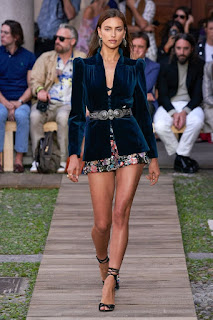First off, picture the future of the fashion world without Paris? Hard to imagine, isn't it?. Debuted in the nineteenth century—Paris has been a cornerstone for all things related to smart fashion designing. The city has evolved over years in the fashion industry and ever since, Paris has constantly presented striking and eye-catching garments and accessories in the global stage.
In the light of Prolific fashion designers from France—think of brilliant talents such as Christian Dior, Paris has surely reigned supreme!
The French styles were so iconic, trendy, artisanal, splendid and eye-catching to the extent that clothing manufacturers around the world were obsessed and copied their ideas.
France's invasion by Germany was recorded to be during the second world war. As a result—the france economy was badly weakened and Paris lost its dominance in the fashion world. Worse enough, some French designers moved to other countries.
While fashion designers of the style-conscious countries like the USA and Britain focused on expanding their empires, especially fashion houses through designing, making and selling high-quality fashion products such as accessories and clothing.
The end of the second world war was marked in the year 1945. A couple of years later—top rated designers such as Christian Dior (1905—1957), Cristóbal Balenciaga (1895—1972), Hubert de Givenchy (1927—2018) among others, worked so hard to rebuild the lost Paris. They successfully managed to get Paris back on the map as a world leading fashion capital.
The 1950s saw a good number of emerging talented fashion designers such as Roberto Capucci (1930—) and Simonetta Visconti (1922—2011), both of them are Italian designers in the joint effort with American designers such as Claire McCardell (1905—1958). The union was a huge challenge enough to put Paris out of the map again when it comes to women's clothing design.
Another stiff competition to Paris was the rise of the ready-to-wear clothing industry which was controlled by large international corporations.
Before the war—if you want a piece of clothing, you pay a premium price and the piece is custom crafted by a tailor. During the war—manufacturers became more updated with the techniques of making war uniforms that flattered a wide range of sizes of people.
Being said—a lot of people, especially low class members favored ready-to-wear. For one thing, ready-to-wear doesn't need further iterations from a tailor and for another reason—they are affordable.
Companies that run ready-to-wear, had their own models that were sent during the major fashion shows. Those businesses bought top-notch garments and then made and marketed clothing lines based on high-end designs.
It was easy for normal people to look fashionable and stylish at a cheap price. It was an avant-garde revolution in the fashion industry and still continues to this day. The modern-day top rated ready-to-wear brands are Calvin Klein, Ralph Lauren, Gucci, Ann Taylor, among others.
REFERENCES:
Batterberry, Michael, and Ariane Batterberry. Fashion: The mirror of History. New York: Greenwich House, 1997.
Laver, James. Costume and Fashion: A concise History. 4th ed. London, England: Thames and Hudson, 2002.
Miller, Brandon Marie. Dressed for the occasion: What Americans Wore 1620-1970. Minneapolis, MN: Lerner Publications, 1999.
Mulvagh, Jane. Vogue History of 20th Century Fashion. New York: Viking, 1988.
Steele, Valerie. Fifty Years of Fashion: New Look to Now. New Haven, CT: Yale University Press, 1997.

